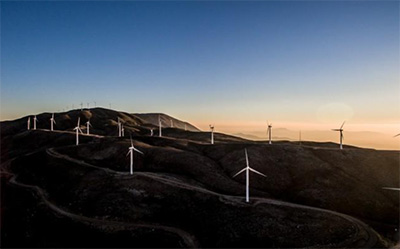Legal & Tax Updates [Back to list]
DOE Issues Policy for Energy Storage System in the Electric Power Industry
On 20 April 2023, the Department of Energy (“DOE”) issued Department Circular No. DC2023-04-0008 (“Circular”) prescribing the policy for Energy Storage System (“ESS”) in the Electric Power Industry. The policy was issued to accommodate the development of ESS for Renewable Energy (“RE”) integration and grid stability. ESS is a facility capable of absorbing energy directly from the Grid or Distribution System, or from an RE Plant or from a Conventional Plant connected to the Grid or Distribution System and storing it for a time period, and injecting stored energy when prompted, needed to ensure reliability and a balanced power system.
The Circular applies to electric power industry participants including but not limited to Generation Companies (“GenCos”); Distribution Utilities (“DUs”); Directly Connected Customers owning and operating ESS; End-Users owning and operating ESS; Microgrid Service Provider (“MGSP”); Transmission Network Provider (“TNP”); System Operator (“SO”); Market Operator (“MO”); and other entities as applicable.
The Circular also enumerates the duties and responsibilities of various electric power industry participants. GenCos, DU, End-users, MGSP, TNP and Small Grid Owner, SO and Small Grid SO, and MO have specific roles outlined in the Circular. GenCos have the option to own a stand-alone ESS, Integrated RE Plant and ESS, Integrated Non-RE and ESS, or a Generation Plant and ESS. End-users may own and operate a Generating Plant and ESS to manage their energy demands, subject to permitting and operational requirements and capacity thresholds. MGSPs may own and operate ESS in conjunction with Conventional and/or RE-based generating facilities, aligning with the government’s total electrification program.
Market Registration and Participation
Stand Alone ESS shall secure a Certificate of Compliance for ESS (“COC-ESS”) from the ERC, while GenCos intending to operate an Integrated RE Plant and ESS or Integrated Non-RE Plant and ESS shall apply only for a single COC. For Generation Plant and ESS, the proponent shall secure a separate COC and COC-ESS for each facility. All ESS shall comply with the rules and regulations on Safety, Health, Environmental Standards, Proper Disposal and Recycling enforced by the concerned government agencies. In this regard, an Environmental Compliance Certificate or any other equivalent document from the Department of Environment and Natural Resources and other requirements by relevant government agencies must be secured by all ESS proponents.
For market registration and participation of ESS in the Wholesale Electricity Spot Market (“WESM”), the following are mandated to register separately in the WESM and shall thereafter be subjected to central dispatch by the SO:
- ESS connected to the Transmission System and are absorbing and injecting energy into it; and
- ESS connected to the Distribution System and are absorbing and injecting energy into it, with a capacity of at least 10MW for Luzon Grid, 5MW for Visayas Grid, and 5MW for Mindanao Grid.
Voluntary WESM registration is allowed for ESS with a capacity below the specified thresholds.
Incentives for Integrated RE Plant and ESS
Energy stored and dispatched from Integrated RE Plants and ESS shall be classified as RE. As a result, RE developers will be eligible for incentives including but not limited to income tax holidays, duty-free importation, zero-rated value-added tax, and other relevant incentives. Furthermore, Integrated RE Plants and ESS, as applicable, will receive preferential dispatch, although they have the option to register as scheduled generating units.
The full copy of the Circular may be accessed here.
